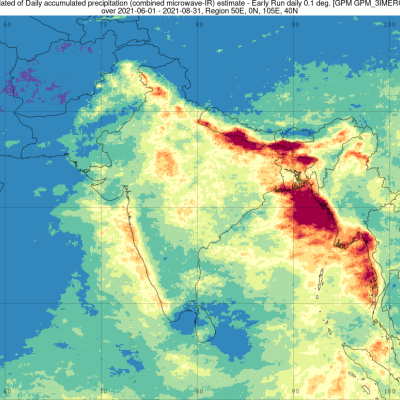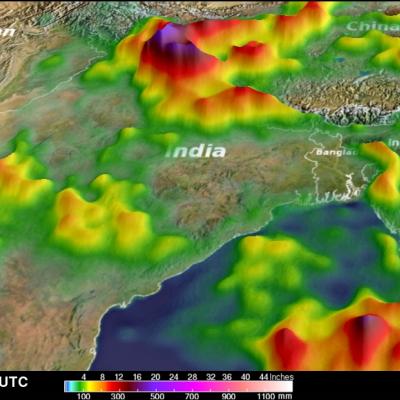GPM Captures Monsoon Rains Bringing Flooding to India
The summer monsoon is a regular feature this time of year in India, and it can bring heavy rains to the region. However, periodically areas of low pressure can form within the general monsoon trough and bring even more rain. Although the extreme Himalayan topography located to the north is much more well-known, another contributing factor to the heavy rains along the southwest coast of India is the Western Ghats. Though much smaller than the Himalayas, this mountain range runs parallel to the West Coast of India with many peaks over 2,000 meters (~6,500 feet). As a result, the Western Ghats









